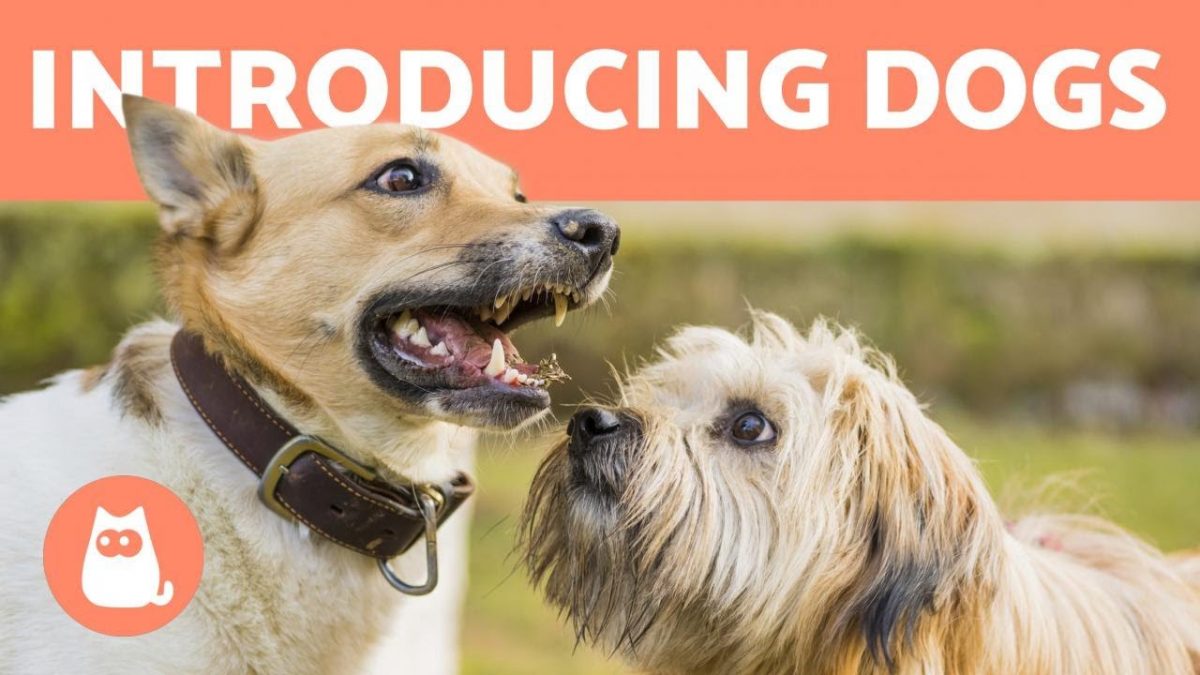hen you are introducing an aggressive dog to a new dog, it should always be a slow and steady process.
You may want to make multiple visits before you decide if a dog is right for you or not. Because of this reason, it is essential to closely work with the adoption agency or the breeder.
Generally, using a parallel walk method is probably the best way to introduce an aggressive dog to a new dog. Additionally, invest in a dog muzzle as a safety precaution.
In this method, the dogs can meet each other calmly while utilizing distance and movement.
Here are the points to be considered:
Put both the dogs on back clipped harnesses and leashes. The harnesses or collars must be comfortable for this introduction, we do not want the dogs on choke chains, e-collars, or pong.
Walk both the dogs on the opposite sides of a wide street, but in the same direction. You will need more space for dog-reactive dogs, rather than dog-selectivedogs. Sometimes it is easier to have the dog-reactive dog in the back so that he can keep his eyes on the new dog.
Reward the dogs with treats every time they look at each other calmly. If the reactive dog starts barking or lunges, it means you are too close, and it is time to take a break.
Use hedges, parked cars, or other natural barriers available to give the reactive dog a break from the other dog.
While keeping them going in the same direction, gradually close the distance between the two dogs. You can do this by turning on to a smaller street, for example, from two-lane street to single lane street, or you can move towards a park, where the dogs can move closer to each other.
Eventually, you can allow the aggressive/reactive dog to approach the new dog and sniff it. Keep the leashes of the dogs on, and after a few seconds, call them apart to give them a brief break.
Repeat as needed.
It is extremely important that you keep both the dogs relaxed and give them plenty of space while introducing them. Avoid this introduction on the territory of the aggressive dog.
Of course, it does mean that after the introduction, everything will be smooth sailing. Some reactive dogs will be just fine after meeting a dog. But many aggressive dogs may need continuous management for weeks or months.
Aggressive dogs are snarky and reactive, and they are most likely to bite. In this situation, it is very helpful if you can train your dog to wear a muzzle. When your dog is wearing amuzzle, it makes people more confident, and this helps your dog to stay calm.
But a dog muzzle, although it prevents bites, it will not help with the aggression. If your dog is aggressive, it is your responsibility to ensure the safety of others and of the dog as well by taking all appropriate measures, which include the use of a dog muzzle if you see any indication.


